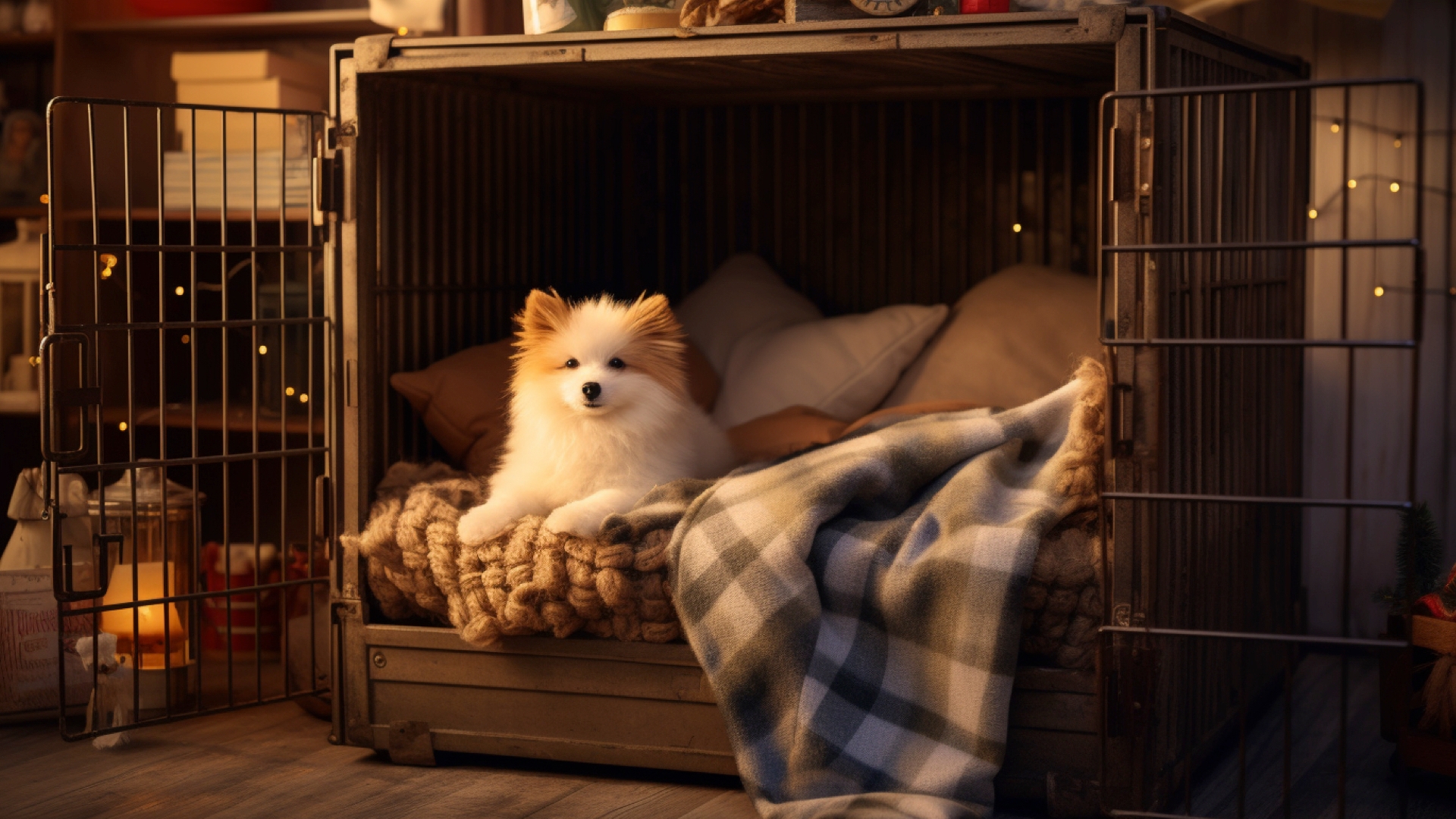Dog Crates and Kennels:
A Safe Space or a Doggy Jail?
Summary:
Crates and kennels have long been tools in the world of dog ownership, offering both sanctuary and, at times, controversy. Their historical use for transport has evolved into a multifaceted tool for training and safety. When used correctly, they can provide dogs with a sense of security and structure. However, misuse can lead to physical and psychological harm. The key lies in understanding their purpose, ensuring they're used ethically, and always prioritizing the well-being of our canine companions.


- Crates and Kennels: An Overview
- From Past to Present: The Evolution of Crating
- The Bright Side: Benefits of Crating
- The Dark Side: Misuse of Crates
- Inside a Dog's Mind: Psychological Effects
- Happy Crating: Tips for a Positive Experience
- Beyond the Bars: Alternatives to Crates
- What the Experts Say
- Picking the Perfect Crate or Kennel
Crates and kennels: to some, they're seen as a dog's personal den, a safe haven. To others, they resemble a cold, confining cage. The debate around these canine confines is as varied as dog breeds themselves. So, is it a sanctuary or a cell? Let's dig deeper into the world of crates and kennels, examining their pros, cons, and everything in between.
Crates and Kennels: An Overview Crates and kennels have been used for dogs for decades, serving various purposes from transportation to training. To some, they offer a structured environment, a place where a dog can retreat and relax. To others, they can seem restrictive, especially when misused. The key to understanding their role lies in examining their purpose, benefits, and potential pitfalls.
From Past to Present: The Evolution of Crating Historically, crates and kennels were primarily used for transporting dogs, especially working breeds. Over time, as dog ownership shifted from work to companionship, the role of crates evolved. They became tools for house training, managing behavior, and providing a safe space. However, as their usage grew, so did the debates around their ethical implications.
The Bright Side: Benefits of Crating When used correctly, crates can offer numerous benefits. They can serve as a dog's personal space, a place they associate with relaxation and safety. For puppies, crates can be invaluable for house training, teaching them to hold their bladder and establishing a routine. For adult dogs, especially those with anxiety, a crate can serve as a sanctuary during stressful events like thunderstorms or fireworks.
The Dark Side: Misuse of Crates The controversy around crates often stems from their misuse. Leaving a dog confined for extended periods, using the crate as a form of punishment, or placing a dog in an improperly sized crate can lead to physical and psychological harm. Dogs are social animals, and prolonged isolation can lead to depression, anxiety, and behavioral issues.
Inside a Dog's Mind: Psychological Effects The psychological impact of crating largely depends on the dog's experiences. A crate introduced positively, filled with toys, treats, and comfortable bedding, can be perceived as a safe haven. However, a crate used negatively can lead to feelings of confinement and stress. Observing a dog's behavior can provide insights into their feelings towards their crate. Reluctance to enter, excessive barking, or signs of distress can indicate negative associations.
Happy Crating: Tips for a Positive Experience** To ensure that a crate becomes a happy place for your dog, it's essential to introduce it positively. Start by placing the crate in a common area where the family spends time. Add soft bedding, toys, and even an item of your clothing to make it inviting. Initially, leave the door open and let your dog explore it at their own pace. Reward them with treats and praise when they go inside. Over time, you can introduce short periods of confinement, always ensuring it's a positive experience. Remember, the crate should never be used as a punishment.
Beyond the Bars: Alternatives to Crates While crates can be beneficial, they aren't the only option. Playpens offer a larger space for dogs to move around while still being confined. Baby gates can be used to restrict access to certain areas of the house without full confinement. For those who are against the idea of physical barriers, training methods like the "place" command can provide a similar structure, teaching the dog to stay in a designated area until released.
What the Experts Say Veterinarians and dog behaviorists often have varied opinions on crating. Most agree that when used correctly, crates can be beneficial. Dr. Jane Goodall, a renowned animal behaviorist, suggests that dogs, like their wild counterparts, appreciate a den-like space for security. However, experts also emphasize the importance of ensuring the crate is not overused or misused, leading to potential behavioral and psychological issues.
Picking the Perfect Crate or Kennel Choosing the right crate is crucial. It should be large enough for your dog to stand, turn around, and lie down comfortably. Wire crates offer good ventilation and visibility, while plastic crates can feel more den-like. For those looking for a more aesthetically pleasing option, furniture-style crates blend seamlessly with home decor. Ensure the crate has a comfortable mat or bed, and consider covering it with a blanket to create a cozier feel. For those interested in purchasing, the MidWest Homes for Pets Dog Crate is a popular choice among dog owners.
Crates and kennels, when used thoughtfully, can offer dogs a sense of security and routine. However, like any tool, their value lies in how they're used. It's up to us, the caretakers of our furry friends, to ensure that these spaces are used for comfort and safety, not confinement and neglect. By staying informed and empathetic, we can provide our dogs with the best of both worlds: freedom and a cozy corner to call their own.


